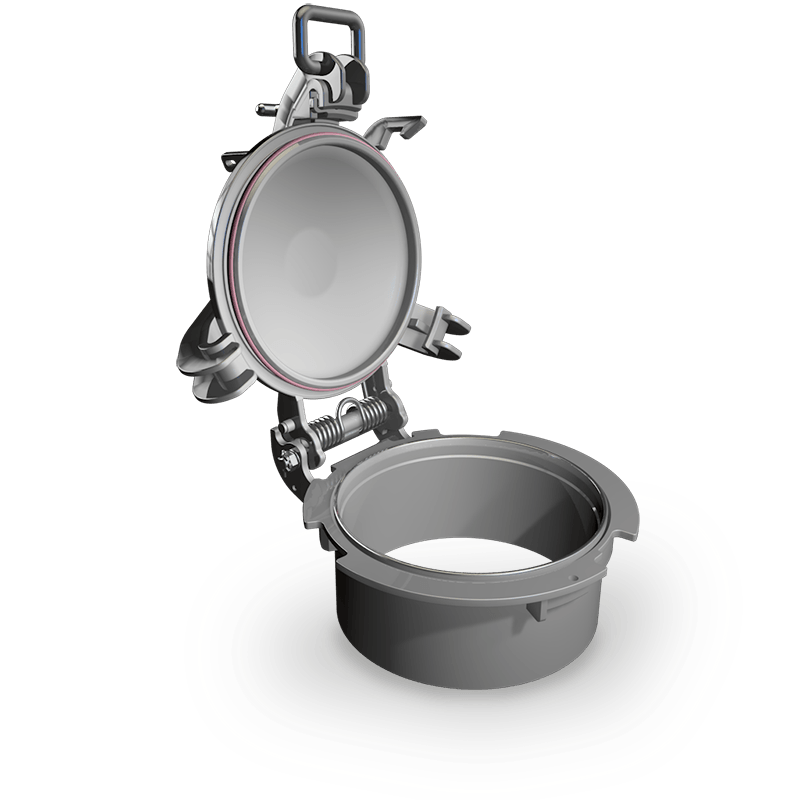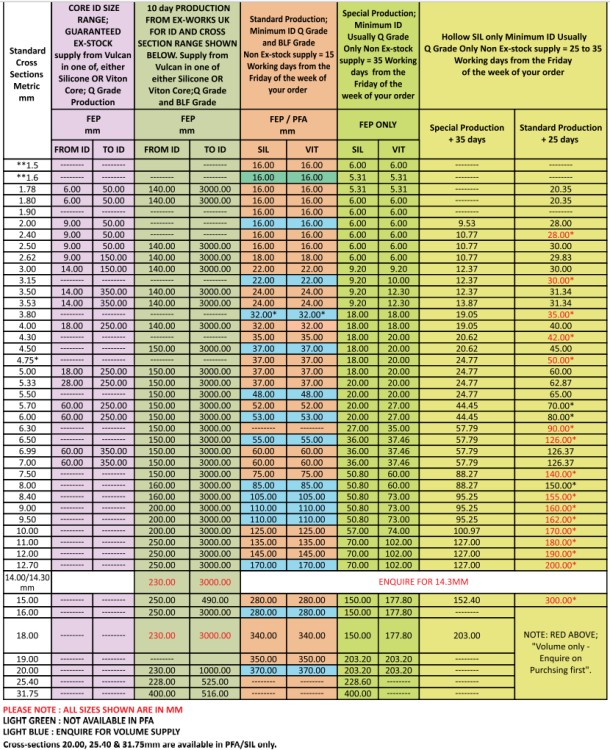Manways, Manhole, Tank Lid Gasket

Manways, Manhole, Tank Lid Gasket
The real secret to the success of the manway gasket lies in our Encapsulated O-ring a unique solution for sealing the tank car manway: instead of squeezing a flat gasket to achieve a seal, it uses an O-ring positioned between the nozzle wall and the cover sheer. This creates consistently uniform compression on the seal. Additional pressure from within only works to the advantage of the system, actually enhancing the sealing force.
It is fundamentally different from all other designs. Our Encapsulated O-ring design centrally applies force which distributes equally around the cover. There are no troublesome eye-bolts, no unequal loading. The operator can create a perfect seal in one quick operation with simple hand tools. No re-torquing is needed. No special sockets or tools.
Our encapsulated O-ring using Teflon® polytetrafluoroethylene, which can withstand a large number of operational cycles, saving replacement and stocking costs. The O-ring material itself is highly resistant to a broad range of chemicals, so that in most cases, only one model will be required.
Benefits
- Lasts for many repeated operational cycles
- Saves on replacements
- Reduce stocking cost
- Compatible with broad range of chemicals
- Only one type of seal required
- O-rings will not fall into tank
- O-ring eliminates cargo leakage non-accidental release
- Unsusceptible to corrosive surface
- 3-A Sanitary, USP Class VI ,FDA Regulation 21.CFR.177.1550, BSE/TSE , EU VO 1935/2004
Hardness:
85-90 Shore A for solid core Silicone
90-95 Shore A for solid core Viton®
75-80 Shore A for hollow core Silicone
Temperature Range
FEP Encapsulation : -60°C to +205°C (-75°F to +400°F) Short durations to +260°C. (+500°F)
PFA Encapsulation : -60°C to +260°C (-75°F to +500°F) Short durations to +300°C. (+575°F)
Chemical Resistance, Restricted Permeability & Absorption
Typical chemicals with which ‘FEP/PFA’ resins are compatible
|
Abetic acid |
Bromine |
Diethyl carbonate |
|
Acetic acid |
N-Butyl amine |
Dimethyl ether |
|
Acetic anhydride |
Butyl acetate |
Dimethyl formamide |
|
Acetone |
Butyl methacrylate |
Di-isobutyl adipate |
|
Acetophenone |
Calcium chloride |
Dimethylformamide |
|
Acrylic anhydride |
Carbon Disulfide |
Dimethyl hydrazine |
|
Alkyl methacrylate |
Cetane |
Dioxane |
|
Ammonium chloride |
Chloroacetic Acid |
Ethyl acetate |
|
Aniline |
Chloroform |
Ethyl alcohol |
|
Aqua Regia |
Chlorosulfonic acid |
Ethyl ether |
|
Benzoyl chloride |
Chromic acid |
Ethyl hexanoate |
|
Benzoyl alcohol |
Cyclohexane |
Ethylene bromide |
|
Benzoyl Peroxide |
Cyclohexanone |
Ethylene glycol |
|
Borax |
Dibutyl phthalate |
Ferric chloride |
|
Boric acid |
Dibutyl sebacate |
Freons |
|
Ferric phosphate |
2-Nitro-butanol |
Potassium permanganate |
|
Fluronitrobenzene |
Nitromethane |
Pyridine |
|
Formaldehyde |
Nitrogen tetroxide |
Soap and detergents |
|
Formic acid |
2-nitro-a2-methyl |
Sodium fluoride |
|
Furane |
N-Octadecyl alcohol |
Sodium hydroxide< 80% |
|
Gasoline |
Diesel |
Sodium hypochlorite |
|
Hexacholoethane |
Nitric acid |
Sodium peroxide |
|
Hexane |
Nitrobenzene |
Solvents,aliphatic & aromatic2 |
|
Hydrochloride acid |
Oleum |
Stannous chloride |
|
Hydrocyanic acid |
Ozone |
Sulphur |
|
Hydrofluoric acid |
Perchlorethylene |
Sulphuric acid |
|
Hydrogen peroxide |
Pentachloro-Benzamide |
Tetrabromoethane |
|
Isopropyl alcohol |
Perfluoroxylene |
Tetrachloroethylene |
|
Isocyanates |
Phenol |
Trichloroacetic acid |
|
Lead compounds |
Phosphoric acid |
Trichlorethylene |
|
Mangesium chloride |
Phosphorus |
Tricresyl phosphate |
|
Mercury |
Pentachloride |
Triethanolanime |
|
Methyl ethyl ketone |
Phthalic acid |
Turpaentine |
|
Methacrylic acid |
Pinene |
Unleaded fuel |
|
Methanol |
Piperidene |
Vinyl methacrylate |
|
Methyl methacrylate |
Polyacrylonitrile |
Water |
|
Napthalene |
Potassium acetate |
Xylene |
|
Napthols |
Potassium hydroxide<50% |
Zinc chloride |
Note: Molten alkali metals, fluorine and several complex halogen compounds (chlorinetrifluroide) are incompatible with FEP/PFA resins.

- Railcar Manway
- Tankcar Manway
- Manhole
- ISO Tanker
- Pressure vessel

